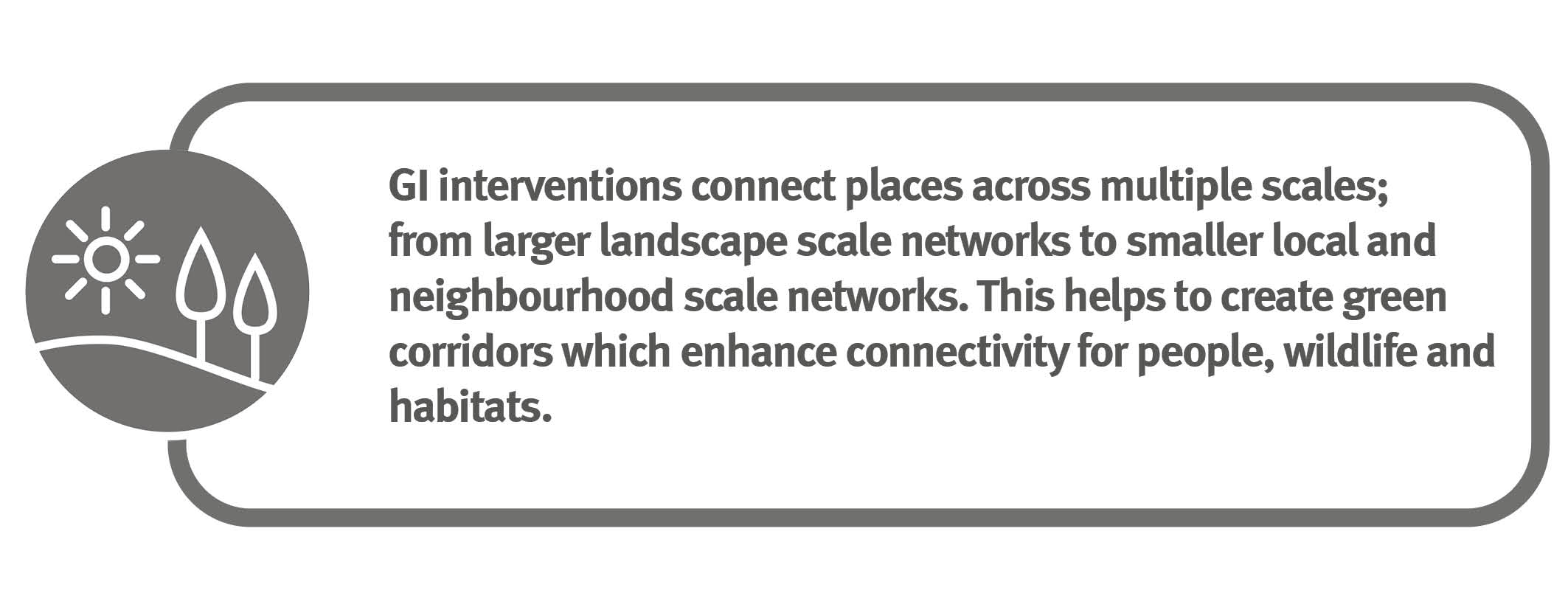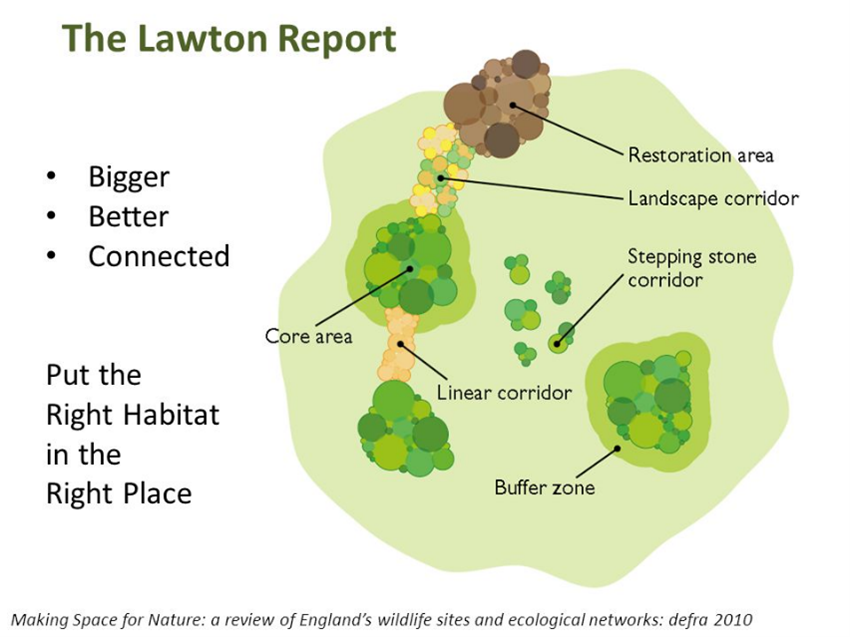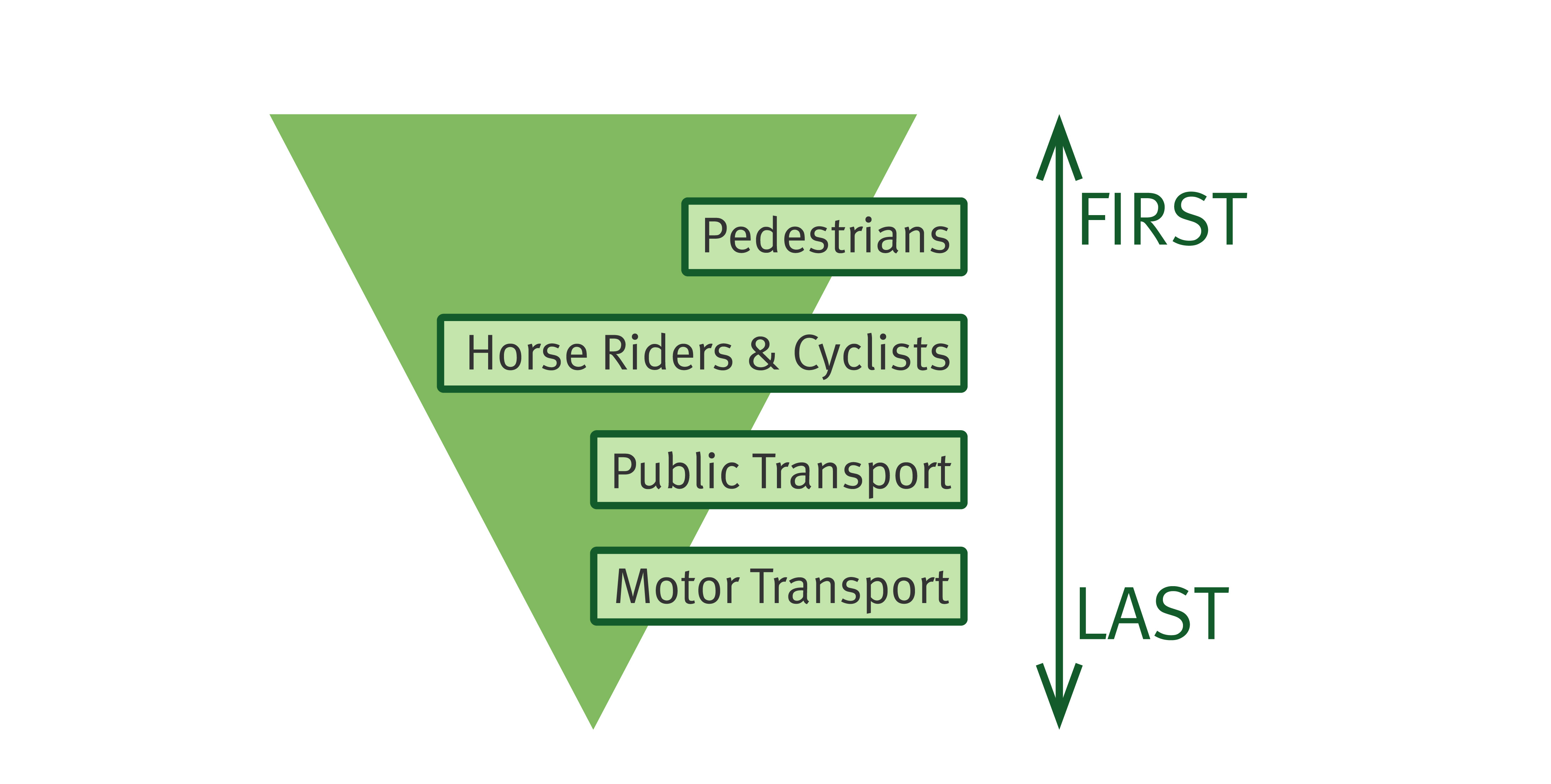Principle 7: Increased Connectivity
Standard
Why does it matter?
The pressures of changing land use, development and population growth in Essex will have an impact on our environment and potentially cause habitat fragmentation and biodiversity loss. However, good GI design can demonstrate how developments and retrofitting can provide a positive contribution to mitigate these impacts.
Creating GI connectivity through developments proposals and GI Projects will help to reconnect existing and fragmented nature areas; for instance, through green corridors and/or green bridges, as well as improving the general ecological quality of the wider environment.
Good GI should make connections between our urban, rural and coastal areas, from our towns and cities to our villages. Good GI connectivity should enable the movement of people and wildlife through green networks and corridors and helps connect people with nature, reducing health inequalities. Good strategic planning can guide infrastructure developments away from sensitive sites, thereby reducing the risk of further habitat fragmentation.
The protection, enhancement, creation and connectivity of our GI to the wider GI network will maximise the delivery of the multiple functions and benefits from GI.
Meeting the principle
The provision of GI is an important solution to delivering the Lawton principles of more, bigger, better and joined. It advocates a landscape-scale approach to conservation and enhancing connections between sites, either through physical corridors or through ‘stepping stones’
To ensure that access to green spaces is as easy as possible for all, enhances biodiversity and to improve the character and sense of place, it is essential that greater connection with public realm, developments and transport planning is established. Therefore, GI is best achieved through an integrated approach to land management, prioritising key strategic areas. A GI Strategy will provide the foundation for good planning and design for GI, offering a consistent approach by focusing on different spatial aspects from regional, to county to local district to neighbourhood level.
Dissection of the linear network of cycleways, public rights of way, bridleways and ecological corridors such as ancient woodlands, hedgerows, ditches and water environments are avoided, where possible. Every effort needs to be made to ensure that connections between green spaces and developments are achieved to ensure that routes make sustainable connections. People will therefore hopefully choose to use these routes for local trips, over the car, with a move towards a user hierarchy as promoted through the Essex Walking Strategy as shown below:
User hierarchy for accessing green spaces, highways and green route design
In line with Principle 4: Early Engagement. opportunities and local needs should inform GI planning and design. Local need includes outcomes such as better health, improved air quality or addressing identified deficits in local GI supply. Create connectivity to ensure there are good accessible links for all between urban, rural areas and GI widening the GI network to help prevent fragmentation. It’s important to identify multifunctional areas where multiple functions can all operate together in the same space, delivering multiple benefits. Natural landscape features such as small water courses, forest patches and hedgerows can act as green corridors for wildlife.
New developments should be located where they can be linked to services and facilities through establishing green active travel routes (walking, cycling and bridleways) that are accessible for all and would minimise the need for motor vehicle movements.
Page updated: 4/04/2023


